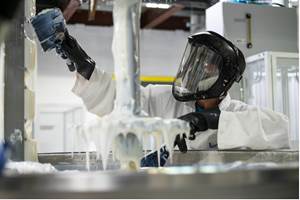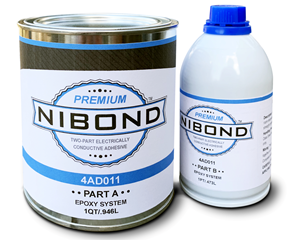Plastic honeycomb goes large-scale
With RENOLIT GORCELL's broad commercialization, recent licensing by Toray, and “cooperation” with Lanxess, EconCore’s continuous thermoplastic honeycomb process gains more followers in pursuit of low-cost panels for mass markets.
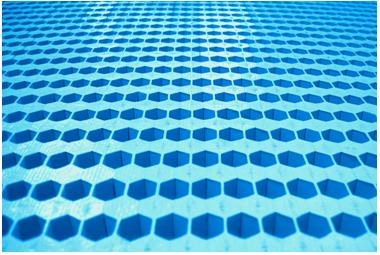
EconCore claims it provides the technology for the most economic
honeycomb sandwich panels and parts. SOURCE: EconCore
EconCore’s (Leuven, Belgium) continuous thermoplastic honeycomb production process called ThermHex has been around for more than a decade. Developed and patented by Belgium’s largest university, KU Leuven (Leuven, Belgium), ThermHex technology enables cost-efficient products using a wide range of polymers including polypropylene (PP), polyester (PET), polyvinyl chloride (PVC), polyamide (PA), acrylonitrile butadiene styrene (ABS), nylon, polyphenylene sulfide (PPS) and many others. The honeycombs can be made directly from an extruder or roll of material with a variety of cell sizes, densities and thicknesses. The resulting honeycombs have closed skin strips, creating more surface area for excellent bonding of skins onto the core. In fact, the process easily allows inline lamination of faceskins and panel post-processing, furthering potential cost reduction.
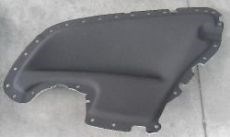
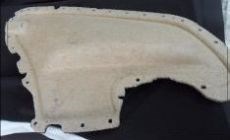
|
Automotive door panel made of ThermHex honeycomb
with natural fiber / PP composite skins. SOURCE: EconCore
CW reported in April that Toray (Tokyo, Japan) and Itochu (Tokyo, Japan) have licensed the ThermHex technology from EconCore. Toray says it will combine ThermHex with its own core and sandwich panel materials technology called NANOALLOY to offer what is described as extraordinary impact absorption. (See April news item.)
EconCore and LANXESS (Cologne, Germany) have also announced a “cooperation” agreement to manufacture new honeycomb cores from various polymers including Durethan polyamides using the ThermHex continuous process and to combine these with Tepex continuous fiber-reinforced thermoplastic composites from LANXESS subsidiary Bond-Laminates for use in high-performance composites applications. Hartwig Meier, head of product and applications development in the LANXESS High Performance Materials business unit, detailed, “We expect the thermoplastic sandwich structures, with their high-quality mechanical properties, to be suitable for replacing metal in many areas and thus reducing weight, for instance in motor vehicles, but also in the building and transportation industries, boat and furniture building and motorhome manufacturing.”


|
Lanxess PA core with TEPEX skins (left) and PP core with
natural fiber skins (right). SOURCE: EconCore.
Another licensee, Renolit GOR (Buriasco, Italy), exhibited its RENOLIT GORCELL honeycomb products at JEC 2014 (March 11-13, Paris, France) sold into building, furniture and automotive end-uses. According to Axel Kulke, sales director for Renolit Composites, the company has been selling wood plastic composite (WPC) sheets for more than 42 years. “Recently the automotive and building markets have requested development of a material/panel which has still the same characteristics as current WPC but with increased stability and stiffness without adding much weight.” Kulke says Renolit decided to invest in EconCore’s honeycomb technology because it enabled automated production of honeycomb “and then thermo-laminating our WPC sheets on both sides as skins for markets like automotive, furniture, flight cases, van superstructures and floors, marine, facades, booth equipment etc.” Kulke says the RENOLIT GORCELL process is very economical and gentle on energy and other resources. The product won the first prize WPC Innovation Award at the 5th German WPC-Conference (Dec. 10-11, 2013 Cologne, Germany).
Tomasz Czarnecki, technology manager at EconCore, says that Röplast (Eskişehir, Turkey) has also licensed the technology, is installing equipment now and will produce panel products under the “Hexapan” brand. “We are looking into creating similar license cases in the U.S.,” he says, “so the momentum is indeed increasing.”
EconCore supports licensees in their development of applications and integration of the ThermHex technology into their production. It continues to explore new material combinations such as thermoplastic cores with aluminum or steel faceskins targeted for interior and exterior cladding, visual communication boards and transportation applications, and PP honeycomb with natural fiber composite skins for automotive interiors. Additional licensees include: Coroplast (Chicago, Ill., USA), Gifu Plastics (Gifu, Japan), Karton (Pordenone, Italy) and ThermHex Waben (Halle, Germany). EconCore has also signed a license agreement with a world leading steel maker to enable continuous production of super strong honeycomb panels with steel facings. The name of the licensee will be announced soon.
Related Content
Materials & Processes: Resin matrices for composites
The matrix binds the fiber reinforcement, gives the composite component its shape and determines its surface quality. A composite matrix may be a polymer, ceramic, metal or carbon. Here’s a guide to selection.
Read MoreHenkel receives Airbus qualification for European aerospace manufacturing facility
The adhesive company’s Montornès, Spain, plant has been approved as a standard and raw materials supplier for various Airbus platforms, adding to its work in lightweighting, fuel efficiency and automation.
Read MoreScott Bader ATC begins Crestabond MMA structural adhesive production
Scott Bader’s Drummondville, Canada, facility has begun manufacturing and supplying composites-applicable adhesives to its North American customers.
Read MoreCAMX 2022 exhibit preview: Conductive Composites
Conductive Composites expands its portfolio of multifunctional electrically conductive composite materials with a new line of NiShield nonwovens and NiBond electrically conductive two-part structural epoxy adhesive.
Read MoreRead Next
Composites end markets: Energy (2024)
Composites are used widely in oil/gas, wind and other renewable energy applications. Despite market challenges, growth potential and innovation for composites continue.
Read MoreFrom the CW Archives: The tale of the thermoplastic cryotank
In 2006, guest columnist Bob Hartunian related the story of his efforts two decades prior, while at McDonnell Douglas, to develop a thermoplastic composite crytank for hydrogen storage. He learned a lot of lessons.
Read MoreCW’s 2024 Top Shops survey offers new approach to benchmarking
Respondents that complete the survey by April 30, 2024, have the chance to be recognized as an honoree.
Read More















.jpg;maxWidth=300;quality=90)




